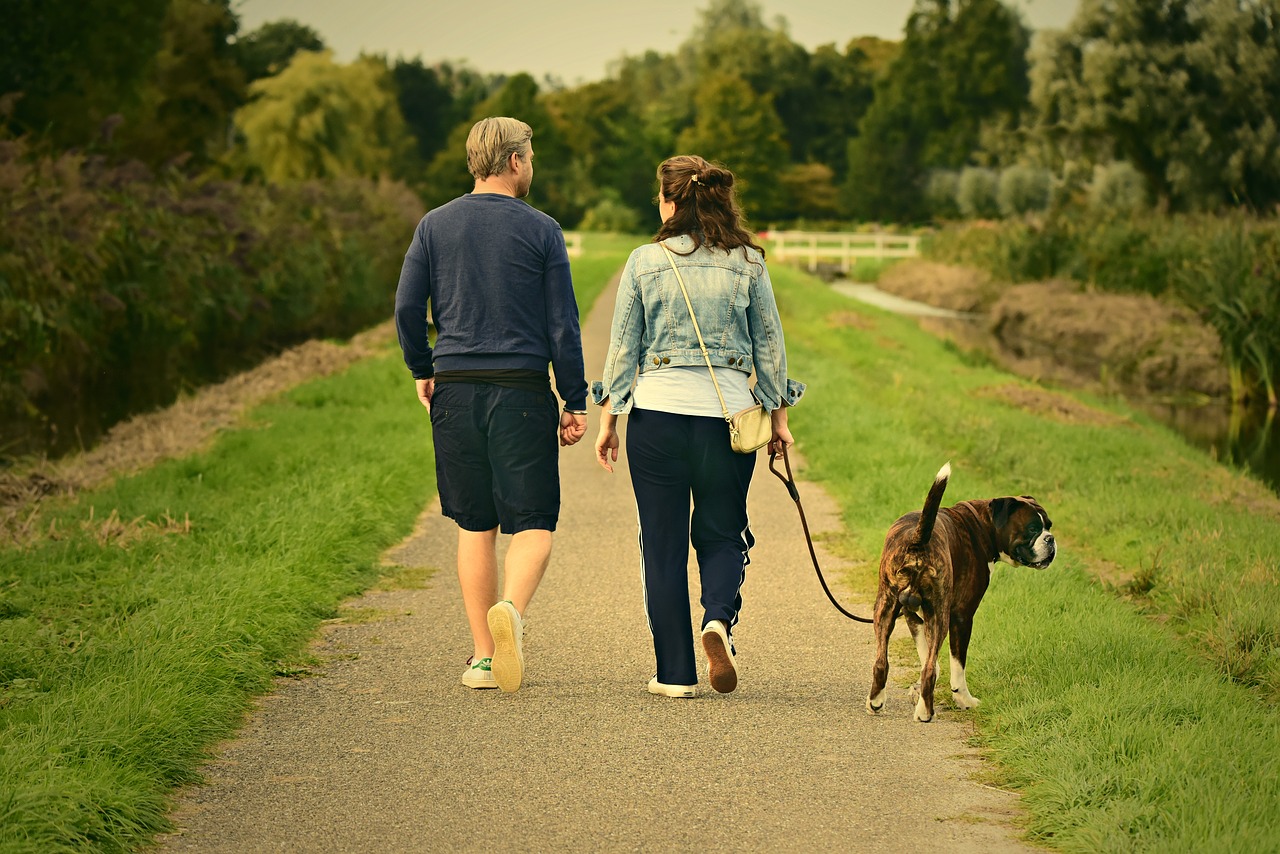
For most of human history, walking for weight loss wasn’t a thought that crossed Homo sapiens’ minds. Walking and running were merely transportation methods, the only means of getting from A to B. And on top of desk jobs and long hours, there are even fewer opportunities in the day to walk anywhere for any reason which is a big problem. Sedentary lifestyles can be attributed to countless health problems, including increased risk of:
On the other hand, walking just 7,500 steps a day (of which 3,000 of those the equivalent of 30 minutes should be done at a brisk pace) could be enough to prevent type II diabetes, according to a review published in Frontiers in Endocrinology.
Walking comes in handy when it comes to preventing chronic disease, but if you’re also wondering can you lose weight by walking, the answer is also yes.
As for how much weight you can lose by walking, results will vary. However, one study found that participants lost an average of three pounds by walking. And it might be obvious, but the study also reported that the more you walk, the more weight you’ll lose.
Walking requires little in the way of equipment, it can be done more or less anywhere, and it’s less likely to stress the joints in the way that running can.
But just because walking upright is an easy, natural way for humans to expend energy from the food we eat, it doesn’t mean that we can’t learn to do it better and increase the belly burn.
By following the tips below, you’ll learn how walking to lose weight is a low-impact way to reach your body goals.
The only “equipment” necessary for walking (unless it’s on the beach) are shoes and chances are you have a pair suitable for the job already. “Walking shoes” have flexible soles and stiff heel counters to prevent side-to-side motion. Having a great soundtrack to your walk will motivate you to push harder and go farther and the best part is that you probably won’t even notice the extra effort that you end up putting in.
It’s good to have a clear idea of where you’ll be walking on any given day. You’ll feel comfortable and confident knowing what to expect as you walk and not waste any walking time figuring out a route on the fly.
Numerous studies confirm that having a strong support group is vital to achieving and maintaining weight loss success, with those who are part of a social support network losing more weight than their solo counterparts. That means a 10-15 minute giggle fest could burn up 40 to 170 calories. Don’t let a run of hot, cold, wet, windy, or icy weather prevent you from walking off your belly. During a heatwave, walk before the sun gets too high in the sky, during a cold snap, do the opposite. That’s because they know that walking is a great way to stave off obesity and illness. There’s no ideal number when it comes to how many daily steps is ideal but Japanese health officials advise 10,000 steps as a goal.
Keeping a journal been shown to increase the effectiveness of a walking program by 47 percent, according to a Journal of the American College of Surgeons study! Keep track of the days that you performed your walking routine, the time of day or night that you performed your walking routine, the distance and time to complete each walking routine, the course in which you performed your walking routine, and your weekly weight.
Go get some of that sunshine or even daylight on your walk. By letting some light into your life, you’ll get some life into your weight loss goals as you stride toward a slimmer, healthier future.
According to a famous holistic health coach, the best strategy for lowering body fat percentage is to get your walk soon after waking up.
Walk like you’re at the airport and you’ve cut it close for departing flight. If you’re 150 pounds walking briskly (around 3.5 miles per hour) will burn around 300 calories every 60 minutes. If you can fit in 30 minutes of brisk walking on a flat surface every day, you’ll have burned off 1,050 calories by the end of the week. Studies show that this sort of weekly calorie expenditure helps protect against heart disease and of course, you’ll probably start noticing that you look and feel different soon.
Engineering researchers have found that walking at varying speeds can burn up to 20 percent more calories compared to maintaining a steady pace. The 2015 study from Ohio State University is one of the first to measure the metabolic cost, or calories burned, of changing walking speeds. While walking briskly for 30 minutes is a great idea, try and work in a few minutes in which you accelerate and decelerate your brisk walk. What’s more: an arm swinging walking style will cause you to burn 5 to 10 percent more calories.
If you want to increase your walking pace there are two ways you can do it.
As well as altering your speed, a great way to burn more belly fat is to switch up the surface you’re walking on. See, walking on grass or gravel burns more calories than walking on a track while walking on soft sand increases caloric expenditure by almost 50 percent, provided that you can keep your pace the same.
Do at least 20 minutes of high-intensity walking on 3 nonconsecutive days per week as you’ll burn more fat during and after these cardio-intensive workouts.
Walking briskly up a short hill is a great example of interval training when interspersed with flat terrain walking. Your leg muscles with thank you if you lean forward slightly when walking uphill and your knees will be even more grateful if you slow your pace, bend your legs slightly and take shorter steps when you descend those hills. Walking with poles while reducing the stress on your knees while working the muscles of your chest and arms as well as some abdominals. If you want to use them, start with one-pound weights and increase the weight gradually. The weights shouldn’t add up to more than 10 percent of your body weight. Ankle weights are not recommended, as they increase the chance of injury.
Walking backward uses the leg muscles differently from walking forward and can be a great way of rehabilitating from a knee injury. Retro walking is safest on a treadmill but a deserted running track would be just as suitable. If you have neither of those settings available to you, walk outside away from traffic, trees, potholes, etc. To avoid muscle soreness, start slowly: don’t try to walk backward more than a quarter mile the first week. That means that green tea can also help you recover faster after a brisk walk. In another Journal of Health Science study, participants who paired drinking a sports beverage with the equivalent of four to five cups of green tea with a 30-minute jog three times a week for 8 weeks increased their ability to burn fat during exercise as well as while they were sedentary.
Rapid weight loss doesn’t get easier than this: Simply drinking more water may increase the rate at which healthy people burn calories, according to a study in The Journal of Clinical Endocrinology and Metabolism. After drinking approximately 17 ounces of water (about 2 tall glasses), participants’ metabolic rates increased by 30 percent. The researchers estimate that increasing water intake by 1.5 liters a day (about 6 cups) would burn an extra 17,400 calories over the course of the year
that’s a weight loss of approximately five pounds. Now imagine maximizing that water weight loss hack with metabolism-boosting walk.
Ever see someone consuming a Gatorade or Vitamin water while walking? Unless they’re walking up a sharp incline in a hurry, they’re doing it wrong. “The truth is, these drinks often have more calories in them than what’s actually being burned off.” “Oftentimes these drinks are needed due to the risk of dehydration,” she says, but cautions that if you’re walking in mild temperatures or for less than an hour, they’re largely unnecessary. Plus, those sugary drinks are terrible nutrition for runners and walkers, anyway!
An International Journal of Obesity study demonstrated that a low-calorie diet that is rich in almonds could help increase weight loss. So bring a small bag of almonds on your walk if you begin to feel hungry.

Walking for weight loss is one thing, but walking has other benefits, as well. Bonus belly fat burning opportunities await you if you can leave the car at home, take the stairs instead of elevators and escalators or if you can walk the mile or two to a friend or relative’s house. If you take mass transit to work, walk to a bus or train stop a little further along the route. It’s important to refuel your body immediately after a workout or brisk walk because it helps replenish glycogen levels, decrease protein breakdown, and increase protein synthesis and the ability to build muscle. “When exercise-induced hunger sets in, only increase your calorie intake up to 20 to 30 percent of what your calorie tracker says you burned,” she says. In fact, 75 percent of the calories that you burn each day are being used up just keeping you alive. “Resting metabolic rate” is much higher in people with more muscle, because every pound of muscle uses about 6 calories a day just to sustain itself. If you can pack on just five pounds of muscle and sustain it, you’ll burn the caloric equivalent of three pounds of fat over the course of a year. Pair that extra brawn with 30 minutes of brisk walking once a day and you’ll start cutting down on your extra fat deposits in no time.
Walking briskly or jogging really does calm you down by sparking nerve cells in the brain that relax the senses, research has shown. And that’s good news for your weight loss goals. Researchers say that the combination of high-cal cravings and a stress-induced, snail-paced metabolic rate can result in significant weight gain. So, by walking to lose weight and reduce stress, you won’t be stress eating as much: it’s a win-win.
Source: www.eatthis.com
Carl Riedel is an experienced writer focused on using Open Source Intelligence (OSINT) to produce insightful articles. Passionate about free speech, he leverages OSINT to delve into public data, crafting stories that illuminate underreported issues, enriching public discourse with perspectives often overlooked by mainstream media.




